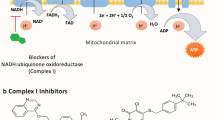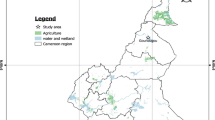Abstract
Previous studies have shown that permethrin resistance in our selected PMD-R strain of Aedes aegypti from Chiang Mai, Thailand, was associated with a homozygous mutation in the knockdown resistance (kdr) gene and other mechanisms. In this study, we investigated the metabolic mechanism of resistance of this strain compared to the PMD strain which is susceptible to permethrin. The permethrin susceptibility of larvae was determined by a dose–response bioassay. Two synergists, namely piperonyl butoxide (PBO) and bis(4-nitrophenyl)-phosphate (BNPP), were also added to determine if the resistance is conferred by oxidase or esterase enzymes, respectively. The LC50 value for PMD-R (25.42 ppb) was ∼25-fold higher than for PMD (1.02 ppb). The LC50 was reduced 3.03-fold in PMD-R and 2.27-fold in PMD when the oxidase inhibitor (PBO) was added, but little or no reduction was observed in the presence of BNPP, indicating that oxidative enzymes play an important role in resistance. However, the LC50 previously observed in the heterozygous mutation form was reduced ∼eightfold, indicating that metabolic resistance is inferior to kdr. The levels of cytochrome P450 (P450) extracted from fourth instar larvae were similar in both strains and were about 2.3-fold greater in microsomal fractions than in crude supernatant and cytosol fractions. Microsome oxidase activities were determined by incubation with each of three substrates, i.e., permethrin, phenoxybenzyl alcohol (PBOH), and phenoxybenzaldehyde (PBCHO), in the presence or absence of nicotinamide adenine dinucleotide phosphate (NADPH), nicotinamide adenine dinucleotide (NAD+), PBO, and BNPP. It is known that hydrolysis of permethrin produces PBOH which is further oxidized to PBCHO by alcohol dehydrogenase (ADH) and then to phenoxybenzoic acid (PBCOOH) by aldehyde dehydrogenase (ALDH). When incubated with permethrin, a small amount of PBCOOH was detected in both strains (about 1.1–1.2 nmol/min/mg protein), regardless of the addition of NADPH. The addition of PBO resulted in about 70% and 50% reduction of PBCOOH in PMD and PMD-R, respectively. The addition of BNPP reduced PBCOOH about 50% and 35% in PMD and PMD-R, respectively. Using PBOH as substrate increased PBCOOH ∼16-fold and ∼40-fold in PMD and PMD-R, respectively. Using PBCHO as substrate increased PBCOOH ∼26-fold and ∼50-fold in PMD and PMD-R, respectively. The addition of NADPH, and particularly NAD+, increased the level of PBCOOH. Together, the results have indicated the presence of a metabolic metabolism involving P450, ADHs, and ALDHs in both PMD and PMD-R strains, with greater enzyme activity in the latter.


Similar content being viewed by others
References
Asai H, Imaoka S, Kuroki T, Monna T, Funae Y (1996) Microsomal ethanol oxidizing system activity by human hepatic chromosome P450s. J Pharmacol Exp Ther 277:1004–1009
Awolola TS, Oduola OA, Strode C, Koekemoer LL, Brooke B, Ranson H (2009) Evidence of multiple pyrethroid resistance mechanisms in the malaria vector Anopheles gambiae sensu stricto from Nigeria. Trans R Soc Trop Med Hyg 103:1139–1145
Chareonviriyaphap T, Aum-aung B, Ratanatham S (1999) Current insecticide resistance patterns in mosquito vectors in Thailand. Southeast Asian J Trop Med Public Health 30:184–194
Choi J, Rose RL, Hodgson E (2002) In vitro human metabolism of permethrin: the role of human alcohol and aldehyde dehydrogenases. Pestic Biochem Physiol 73:117–128
Devlin TM (2006) Textbook of biochemistry with clinical correlations, 6th edn. Wiley, Hoboken
Finney DJ (1971) Probit analysis. Cambridge University Press, London
Flores AE, Albeldaño-Vázquez W, Salas IF, Badii MH, Becerra HL, Garcia GP, Fuentes SL, Brogdon WG, Black WC IV, Beaty B (2005) Elevated α-esterase levels associated with permethrin tolerance in Aedes aegypti (L.) from Baja California, Mexico. Pestic Biochem Physiol 82:66–78
Gibson GG, Skett P (1994) Introduction to drug metabolism, 2nd edn. Blackie Academic & Professional, New York
Guaghan LC, Unai T, Casida JE (1977) Permethrin metabolism in rats. J Agric Food Chem 25:9–17
Guo L, Zeng XY, Wang DY, Li GQ (2010) Methanol metabolism in the Asian corn borer, Ostrinia furnacalis (Guenee) (Lepidoptera: Pyralidae). J Insect Physiol 56:260–265
Harris AF, Rajatileka S, Ranson H (2010) Pyrethroid resistance in Aedes aegypti from Grand Cayman. Am J Trop Med Hyg 83:277–284
Hemingway J, Karunaratne SHPP (1998) Mosquito carboxylesterases: a review of the molecular biology and biochemistry of a major insecticide resistance mechanism. Med Vet Entomol 12:1–12
Hemingway J, Ranson H (2000) Insecticide resistance in insect vectors of human disease. Annu Rev Entomol 45:371–391
Hodgson E (2003) In vitro human phase I metabolism of xenobiotics I: pesticides and related compounds used in agriculture and public health, May 2003. J Biochem Mol Toxicol 17:201–206
Jagadeshwaran U, Vijayan VA (2009) Biochemical characterization of deltamethrin resistance in a laboratory-selected strain of Aedes aegypti. Parasitol Res 104:1431–1438
Jirakanjanakit N, Rongnoparut P, Saengtharatip S, Chareonviriyaphap T, Duchon S, Christian B, Yoksan S (2007a) Insecticide susceptible/resistance status in Aedes (Stegomyia) aegypti and Aedes (Stegomyia) albopictus (Diptera: Culicidae) in Thailand during 2003–2005. J Econ Entomol 100:545–550
Jirakanjanakit N, Saengtharatip S, Rongnoparut P, Duchon S, Bellec C, Yoksan S (2007b) Trend of temephos resistance in Aedes (Stegomyia) mosquitoes in Thailand during 2003–2005. Environ Entomol 36:506–511
Kawada H, Higa Y, Komagata O, Kasai S, Tomita T, Yen NT, Loan LL, Sanchez RP, Takagi M (2009) Widespread distribution of a newly found point mutation in voltage-gated sodium channel in pyrethroid-resistant Aedes aegypti populations in Vietnam. PLoS Negl Trop Dis 3:1–7
Nakamura Y, Sugihara K, Sone T, Isobe M, Ohta S, Kitamura S (2007) The in vitro metabolism of a pyrethroid insecticide, permethrin, and its hydrolysis products in rats. Toxicology 235:176–184
Neely MJ (1966) Insecticide resistance studies on Aedes aegypti in Thailand. Bull WHO 35:91–92
Paeporn P, Ya-umphan P, Supaphathom K, Savanpanyalert P, Wattanachai P, Patimaprakorn R (2004) Insecticide susceptibility and selection for resistance in a population of Aedes aegypti from Ratchaburi province, Thailand. Trop Biomed 21:1–6
Paul A, Harrington LC, Scott JG (2006) Evaluation of novel insecticides for control of dengue vector Aedes aegypti (Diptera: Culicidae). J Med Entomol 43:55–60
Penilla RP, Rodriguez AD, Hemingway J, Trejo A, Lopez AD, Rodriguez MH (2007) Cytochrome P450-based resistance mechanism and pyrethroid resistance in the field Anopheles albimanus resistance management trial. Pestic Biochem Physiol 11:111–117
Pethuan S, Jirakanjanakit N, Saengtharatip S, Chareonviriyaphap T, Kaewpa D, Rongnoparut P (2007) Biochemical studies of insecticide resistance in Aedes (Stegomyia) aegypti and Aedes (Stegomyia) albopictus (Diptera: Culicidae) in Thailand. Trop Biomed 24:7–15
Ponlawat A, Scott JG, Harrington LC (2005) Insecticide susceptibility of Aedes aegypti and Aedes albopictus across Thailand. J Med Entomol 42:821–825
Prapanthadara L, Promtet N, Koottathep S, Somboon P, Suwonkerd W, McCarroll L, Hemingway J (2002) Mechanisms of DDT and permethrin resistance in Aedes aegypti from Chiang Mai, Thailand. Dengue Bull 26:185–189
Scott JG (1999) Cytochrome P450 and insecticide resistance. Insect Biochem Mol Biol 29:757–777
Soderlund DM, Knipple DC (2003) The molecular biology of knockdown resistance to pyrethroid insecticides. Insect Biochem Mol Biol 33:563–577
Somboon P, Prapanthadara L, Suwonkerd W (2003) Insecticide susceptibility tests of Anopheles minimus s.l., Aedes aegypti, Aedes albopictus, and Culex quinquefasciatus in northern Thailand. Southeast Asian J Trop Med Public Health 34:87–93
Stratton GW, Corke CT (1982) Comparative fungitoxicity of the insecticide permethrin and ten degradation products. Pestic Sci 13:679–685
Strode C, Wondji CS, David JP, Hawkes NJ, Lumjuan N, Nelson DR, Drane DR, Karunaratne P, Hemingway J, Black WC IV, Ranson H (2008) Genomic analysis of detoxification genes in the mosquito Aedes aegypti. Insect Biochem Mol Biol 38:113–123
Tikar SN, Mendki MJ, Chandel K, Parashar BD, Prakash S (2008) Susceptibility of immature stages of Aedes (Stegomyia) aegypti; vector of dengue and chikungunya to insecticides from India. Parasitol Res 102:907–913
World Health Organization (1975) Manual on practical entomology in malaria. Part II. Geneva
World Health Organization (1981) Instructions for determining the susceptibility or resistance of mosquito larvae to insecticides. WHO/VBC/81.807. Geneva
Yaicharoen R, Kiatfuengfoo R, Chareonviriyaphap T, Rongnoparut P (2005) Characterization of deltamethrin resistance in field populations of Aedes aegypti in Thailand. J Vector Ecol 30:144–150
Yanola J, Somboon P, Walton C, Nachaiwieng W, Prapanthadara L (2010) A novel F1552/C1552 point mutation in the Aedes aegypti voltage-gated sodium channel gene associated with permethrin resistance. Pestic Biochem Physiol 96:127–131
Yanola J, Somboon P, Walton C, Nachaiwieng W, Somwang P, Prapanthadara L (2011) High throughput assays for detection of the F1534C mutation in the voltage-gated sodium channel gene in permethrin-resistant Aedes aegypti and the distribution of this mutation throughout Thailand. Trop Med Int Health (in press)
Acknowledgments
This work was largely funded by The Thailand Research Fund through the Royal Golden Jubilee PhD program to Pradya Somboon and Puckavadee Somwang (PHD/0145/2548) and the Basic Science grant (BRG5080010) to La-aied Prapanthadara. We would like to thank Posri Leelapat of Research Institute for Health Sciences for her advice and assistance in HPLC analysis.
Author information
Authors and Affiliations
Corresponding author
Rights and permissions
About this article
Cite this article
Somwang, P., Yanola, J., Suwan, W. et al. Enzymes-based resistant mechanism in pyrethroid resistant and susceptible Aedes aegypti strains from northern Thailand. Parasitol Res 109, 531–537 (2011). https://doi.org/10.1007/s00436-011-2280-0
Received:
Accepted:
Published:
Issue Date:
DOI: https://doi.org/10.1007/s00436-011-2280-0




